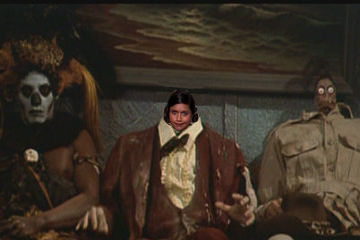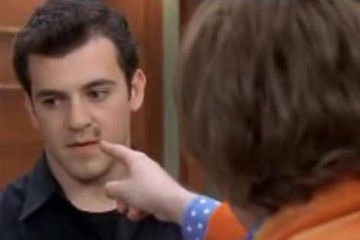What I’ve Learned:
“Where there’s an ‘oh face’, there are endorphins.”
It’s no wonder people get excited about endorphins. If you believe the Wikipedia, endorphins are released “during exercise, excitement, pain, spicy food consumption, love, and sexual activity”.
On the other hand, so is ass sweat. But you never hear fitness gurus talking about “runners’ butt”. What’s so special about endorphins?
The first hint is in the name itself. “Endorphin” is actually bits of two words jammed together; namely, ‘endo-‘, meaning internal, and ‘-orphin’, meaning morphine. Without the ‘m’ or the ‘e’, for some reason — which just goes to show, even scientists lose their shit and get sloppy when morphine is involved.
Endorphins aren’t literally morphine made inside your body; they’re small peptides recognized by the same brain cell receptors that bind morphine. But whereas putting morphine in your body leads to dependence, drug addiction and 19th century Chinese opium dens, releasing endorphins blocks pain, promotes mild euphoria and helps you power through that third order of Chernobyl hot wings.
Another thing endorphins may do is create the fabled “runners’ high” that annoyingly healthy people with spectacular calves are always yammering about. For years, scientists couldn’t directly test brain endorphin levels in runners to confirm the theory, so it could have been anything causing the buzz: adrenaline, fancy running shoes or compression shorts two sizes too small. But new technology finally allowed them to pin the phenomenon on increased endorphins glomming onto brain cells during a jog.
Not that they ruled out the compression shorts. They just didn’t want to look too closely at those.
(Also, different researchers point to the neurotransmitter anandamide, which is an endocannabinoid, or — you guessed it, body-made weed juices.
Man, our bodies are so busy making knockoff drug compounds, I’m surprised we ever get anything accomplished.)
So endorphins are pretty important. Remember: exercise, pain, eating spicy food and having sex. All activities in which we make the same face, and all associated with endorphin release. It’s probably no coincidence.
There can be downsides to endorphin production. Studies suggest that postpartum depression is a side effect of endorphin withdrawal. Apparently, the placenta produces endorphins during pregnancy, and the fetus milks that good-time vibe for all the nutrients it can grab. After birth, Mom’s endorphin levels suddenly drop and she can fall into a funk.
(So can the child, presumably. But the kid’s so busy learning to drool and poop and cram things into its mouth that it probably doesn’t notice.)
There’s also depersonalization disorder, a mental issue linked in part to endorphins. And the ever-present risk of accidentally signing up for an endorphin lab study — because seriously, researchers love these things.
In one experiment — proving what enormous dicks scientists can be sometimes — they studied people getting acupuncture treatment, probably for stress or pain relief. So how did they measure the amount of endorphins released?
With spinal taps. Because nothing says “relief” to an endorphin researcher quite like, “let me suck some spinal fluid out the small of your back”.
So exercise and sex it up and stuff wasabi up your nostrils, if you want. But maybe — for your safety, and everyone else’s sake — keep your endorphins to yourself.
And ditto for the ass sweat. Just sayin’.






